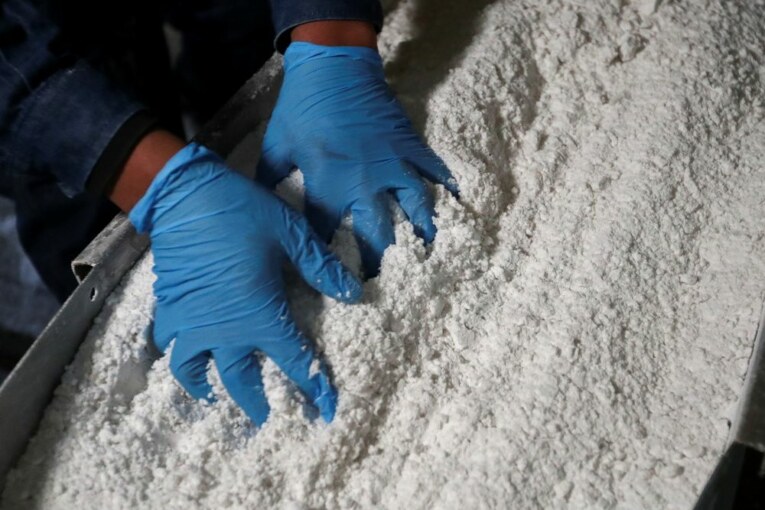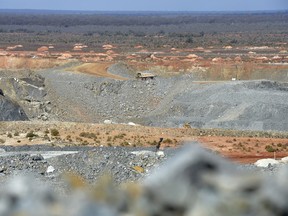
[ad_1]
Ana Cabral Gardner invested in Sigma Lithium Corp. more than six years ago when the demand for the mineral that powers electric vehicles (EV) was nothing compared to the skyrocketing prices of today.
The company’s co-chief executive recalls cancelling an equity offering in 2019 because there was “zero interest” in lithium. Fast-forward three years and the TSX Venture-listed company is ready to begin producing lithium early next year at its Grota do Cirilo project in Brazil, and it could become one of the world’s largest producers of the mineral by 2024 if it expands its mine.
Demand for lithium is widely expected to continue to rise in 2023 as more EVs are sold and nations transition away from fossil fuels. The world will need more than 20 times the amount of lithium that was mined last year to meet demand by mid-century due to growth in energy storage and electric vehicles, Benchmark Mineral Intelligence analysts said on Oct. 13.
But to meet the rising need, Gardner believes miners need to invest more on recovery technology, which will be key in making the most of existing lithium resources.
For example, Sigma’s mine in Brazil is expected to have a lithium recovery rate of about 60 per cent, a figure Gardner described as “stellar,” but added there’s still plenty of room to improve.
“We were the first company in 30 years that invested in improving the dense media separation (DMS) process,” she said, referring to a technique used to separate lithium from other particles by using gravity.
“There has been no investment in hard rock processing technologies for a very long time. There’s so much space to improve this technology, but this isn’t considered sexy.”
Sigma had the luxury of selecting one ore body to mine out of nine in the region, which allowed it to select the one that would perform the best in a DMS plant. Sigma’s plant will also be automated to ensure there’s consistency in the recoveries.
“We didn’t want to be skill-dependent to the plant operator at that shift,” Gardner said.

The demand for lithium has been on the rise since 2019 due to increasing global sales of EVs that use batteries made of lithium and other minerals. But Gardner said the demand curve has shifted on multiple occasions during that time.
Initially, most of the demand for the mineral was from China, which sold 90 per cent of the world’s EVs. However, demand for EVs rose in the European Union after the pandemic as people consciously connected the spread of the virus to environmental failures, she said.
“It was a demand shock that created a supply shock, meaning there was no lithium,” she said. “The market was not prepared for the lithium numbers it saw in 2020. Those were 2025 numbers being posted in 2020.”
The situation worsened once resource-rich Russia invaded Ukraine earlier this year, further curtailing supply while increasing demand for many natural resources and creating an energy crisis.
We don’t have time to waste. We need to accelerate it (energy transition)
Ana Cabral Gardner
After a long hiatus, Gardner said there was a huge investment “all of a sudden” in lithium and other critical minerals, but that capital would take time to be “translated” into product, because mining takes time.
“The example that I often state is that nine women can’t make a baby in one month. It’s going to take nine months,” said Gardner, who previously worked as a senior banker for more than two decades at global investment banks in New York, London and Sao Paulo.
This year was a special one for Sigma, whose stock rose to a yearly high of about $54 after ending last year at $13. One reason behind the rise was Sigma’s ability to demonstrate it could produce, process and deliver lithium in an environmentally safe manner, Gardner said.
“We were eligible for investment by a wider audience, including quite a lot of global impact funds, sustainability funds, ESG funds,” she said.
Sigma said its mine in Brazil would depend only on hydropower for electricity and that it would reuse the water used at its plant. The company is also looking to increase the use of biodiesel in its mining trucks, instead of using diesel.
Demand for minerals such as lithium and the current geopolitical situation have pushed Canada, the United States and some of the bigger European economies to try to shift supply chains away from China, which dominates the EV sector, to friendlier nations.
In November, Ottawa ordered three Chinese companies to divest their stakes in Canadian lithium miners. Earlier this month, the federal government proposed amendments to the Investment Canada Act due to security concerns about foreign investments with a special focus on the critical minerals sector.
Deputy Prime Minister Chrystia Freeland this fall used a series of speeches to stress the need for “friendshoring,” or the idea that democratic allies will build supply chains through each other’s economies and tackle the influence of authoritarian regimes in the energy sector.
Gardner didn’t comment on the alliances being formed with regards to critical minerals, but said she was “baffled” to see geopolitics get in the way of climate action.
“I do think that there is no room for geopolitics in anything related to the energy transition because I don’t think the planet can wait,” she said. “This is the one area where the world should be collaborating, because everybody brings something to the table. We don’t have time to waste. We need to accelerate it (energy transition).”
• Email: [email protected] | Twitter: naimonthefield
[ad_2]
You can read more of the news on source
